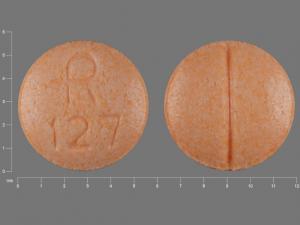Clonidine Disease Interactions
There are 5 disease interactions with clonidine.
Alpha-2 agonists (central) (applies to clonidine) bradyarrhythmia
Moderate Potential Hazard, High plausibility. Applicable conditions: Heart Block, Sinus Node Dysfunction
Central alpha-2 adrenoreceptor agonists reduce sympathetic outflow from the central nervous system. Heart rate is decreased, which may lead to or exacerbate sinus bradycardia and atrioventricular block. Therapy with central alpha-2 adrenoreceptor agonists should be administered cautiously in patients with conduction disturbances such as sinus node dysfunction or AV nodal disease.
Alpha-2 agonists (central) (applies to clonidine) depression
Moderate Potential Hazard, Moderate plausibility.
Central alpha-2 adrenoreceptor agonists may occasionally cause mental depression and should be used cautiously in patients with a history of depression.
Alpha-2 agonists (central) (applies to clonidine) hypotension
Moderate Potential Hazard, High plausibility. Applicable conditions: Ischemic Heart Disease, Peripheral Arterial Disease, Cerebrovascular Insufficiency
Central alpha-2 adrenoreceptor agonists reduce sympathetic outflow from the central nervous system, resulting in decreases in heart rate, peripheral and renovascular resistance, and blood pressure. Therapy with these agents should be administered cautiously in patients with hypotension or conditions that may be exacerbated by decreased blood pressure and perfusion, such as coronary insufficiency, peripheral vascular disease (e.g., Raynaud's syndrome), cerebrovascular disease, or recent myocardial infarction.
Clonidine (applies to clonidine) renal dysfunction
Moderate Potential Hazard, Moderate plausibility.
Clonidine is primarily eliminated unchanged by the kidney. The serum concentrations and half-life of clonidine may be increased in patients with impaired renal function, so patients may benefit from a lower initial dose. Dosage adjustments may be necessary and modifications should be based on the degree of renal impairment. Only a minimal amount of clonidine is removed during routine hemodialysis, and there is no need to give supplemental clonidine following dialysis.
Clonidine (applies to clonidine) sedatives/alcohol
Moderate Potential Hazard, Moderate plausibility. Applicable conditions: Alcoholism
Patients may experience a sedative effect, dizziness, or accommodation disorder with the use of clonidine. Patients should be cautioned about engaging in activities such as driving a vehicle or operating machinery. The sedative effect may be increased with the concomitant use of alcohol or other sedating drugs.
Clonidine drug interactions
There are 373 drug interactions with clonidine.
Clonidine alcohol/food interactions
There is 1 alcohol/food interaction with clonidine.
More about clonidine
- clonidine consumer information
- Check interactions
- Compare alternatives
- Pricing & coupons
- Reviews (761)
- Drug images
- Side effects
- Dosage information
- Patient tips
- During pregnancy
- Support group
- Drug class: antiadrenergic agents, centrally acting
- Breastfeeding
Related treatment guides
Drug Interaction Classification
| Highly clinically significant. Avoid combinations; the risk of the interaction outweighs the benefit. | |
| Moderately clinically significant. Usually avoid combinations; use it only under special circumstances. | |
| Minimally clinically significant. Minimize risk; assess risk and consider an alternative drug, take steps to circumvent the interaction risk and/or institute a monitoring plan. | |
| No interaction information available. |
Further information
Always consult your healthcare provider to ensure the information displayed on this page applies to your personal circumstances.


